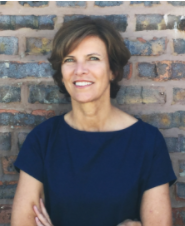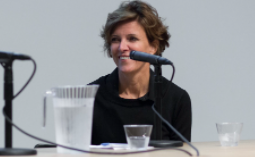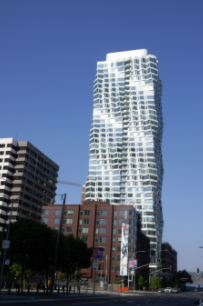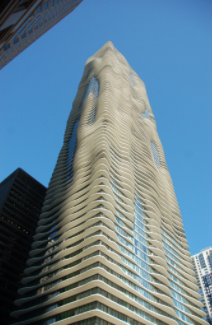Jeanne Gang is a renowned American architect, leader of Studio Gang and university lecturer throughout the world.

Image source: https://search.creativecommons.org/photos/1fe4c8db-87ed-44b7-ba1a-eea4a6b696de by Kramesarah
Actionable idealism
Jeanne Gang was born on March 19, 1964 in Belvidere, Illinois, United States. She earned a bachelor’s degree in architecture from the University of Illinois at Urbana-Champaign in 1986, and in 1989 began studying urban design. Aftern finishing her studies, she found her own firm in the form of Studio Gang, a Chicago and New York-based enterprise.
Gang took a forward-looking approach to design, prioritizing technical and material aspects of her projects, their interaction with the environment, and pheraps most crucially, the role designers – herself included – could play in society; this inquisitive, multifaceted approach to the craft, have singled her out as a leading architect of her generation; the results of her philosophy translate into designs meant to connect people to their communities, their sorroundings, and most importantly, others.

Image source: https://search.creativecommons.org/photos/46d0306f-164c-47d4-b194-00bacf9468c2 by Columbia GSAPP
Studio Gang, naturally, has followed suit her approach, emphasizing research, collaboration, and experimentation within its designs, resulting in a very diverse body of work, wether planning cultural centers (ur-meeting places among different people) or high-rise, community-oriented towers. Taking all of this into account, it should come as no surprise that Studio Gang has produced a considerably-sized body of research and publications, in order to push design’s pivotal role in public consciousness and encourage change – a practice Gang calls “actionable idealism“.
Jeanne Gang’s activities do not end with her profession, however: over the years, she’s acted as Professor in Practice at the Harvard Graduate School of Design, giving lectures focused on the cultural, environmental and social aspects of buildings and their reuse; she’s authored no less than three books on architecture, had her work exhibited all over the world – examples include the Museum of Modern Art, the International Venice Architecture Biennale, and the Art Institute of Chicago; and at the same time, Gang has contributed to, in line with her socially conscious approach to design, actively challenging the gender gap and status quo in professional practice, starting with her own studio and campaigning for the world to follow.

Image source: https://search.creativecommons.org/photos/cc8d509a-97a9-4a35-856a-95da59cd9ba8 by Charlieparkerlives
Internationally renowned for a design process that puts in first place the relationships between individuals, communities, and their sorrounding environments, Jeanne’s work would earn her the 2016 Architect of the Year nomination by the Architectural Review. In 2017, she was honored with the Louis I. Kahn Memorial Award and a Fellowship from the Royal Architectural Institute of Canada.
Aqua Tower
Despite sporting an impressive resume, Gang’s most well known – and peculiar work – can be quickly identified as Aqua Tower.

Image source: https://search.creativecommons.org/photos/58e67775-e839-4ce5-95d0-eb2ac6740ffa by orangemania
Characterized chiefly by its overhanging, concrete balconies, these fluid, wavy curves serve a dual purpose: first, to give the building its striking aesthetic, evoking the ripples forming on water’s surface, and second, to aerodinamically diffuse strong winds, so that – uniquely for a skyscraper – every floor, on every side of the building, can have its almost uninterrupted ring of balconies. The cherry on the – literal – top is the green, garden roof, at the time of construction the largest in Chicago.

Image source: https://search.creativecommons.org/photos/2c6168e9-3408-4423-9423-f7f750c237e2 by waldopics
While focusing the studio activities around (but not exclusively in) Chicago, her major projects ranged from private homes (Brick Weave House) and educational facilities (Columbia College Chicago Media Production Center) to exhibition spaces (Expo Chicago) and other outdoor structures (the Nature Boardwalk at Chicago’s Lincoln Park Zoo). These structures were often heralds of innovative design strategies, often with the shared goal of improving biological and ecological conditions in cities, starting with the inclusion of bird-safe building techniques and an experimental prairie ecosystem on the rooftop of their Chicago office.
Info sources:
http://studiogang.com/people/jeanne-gang
